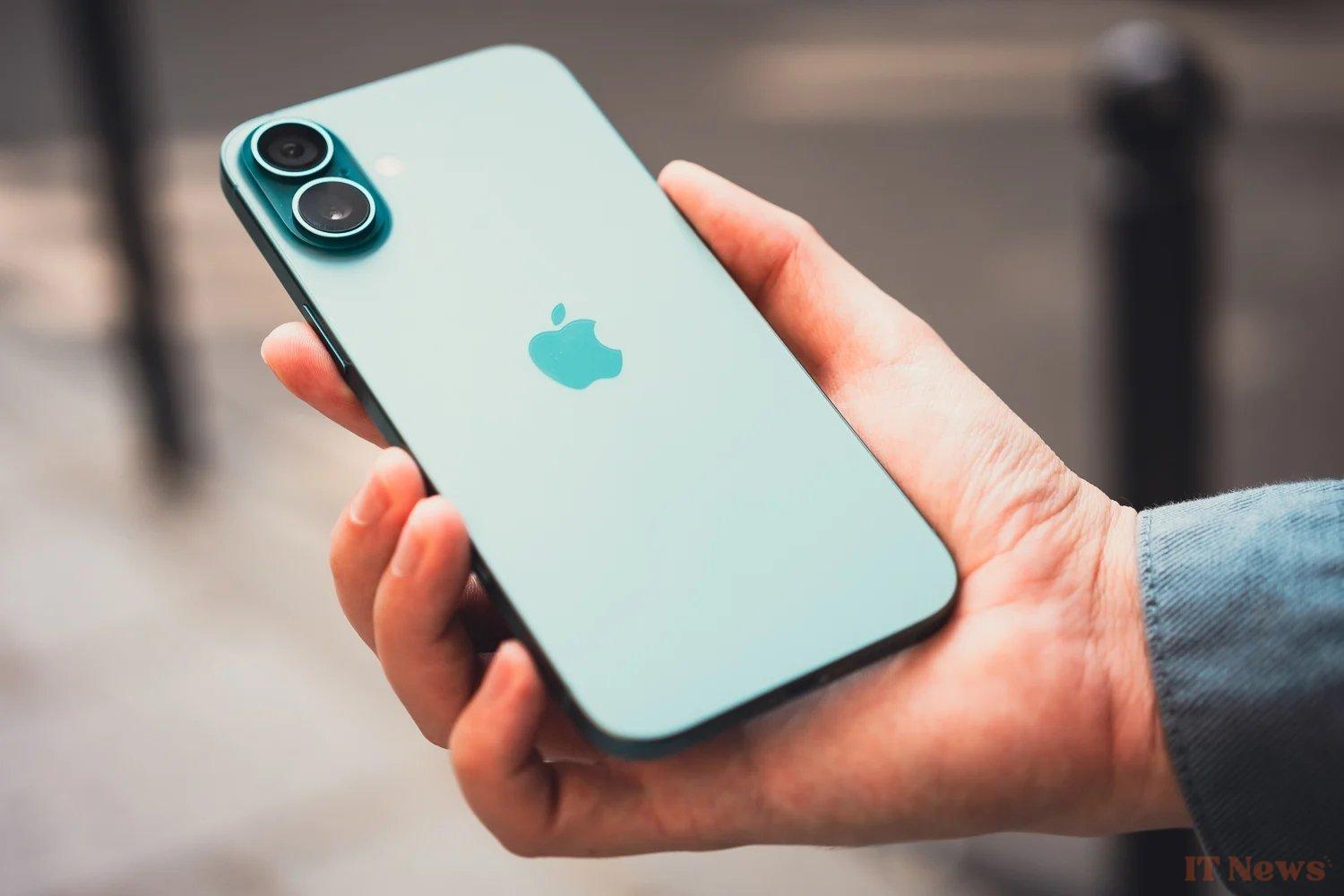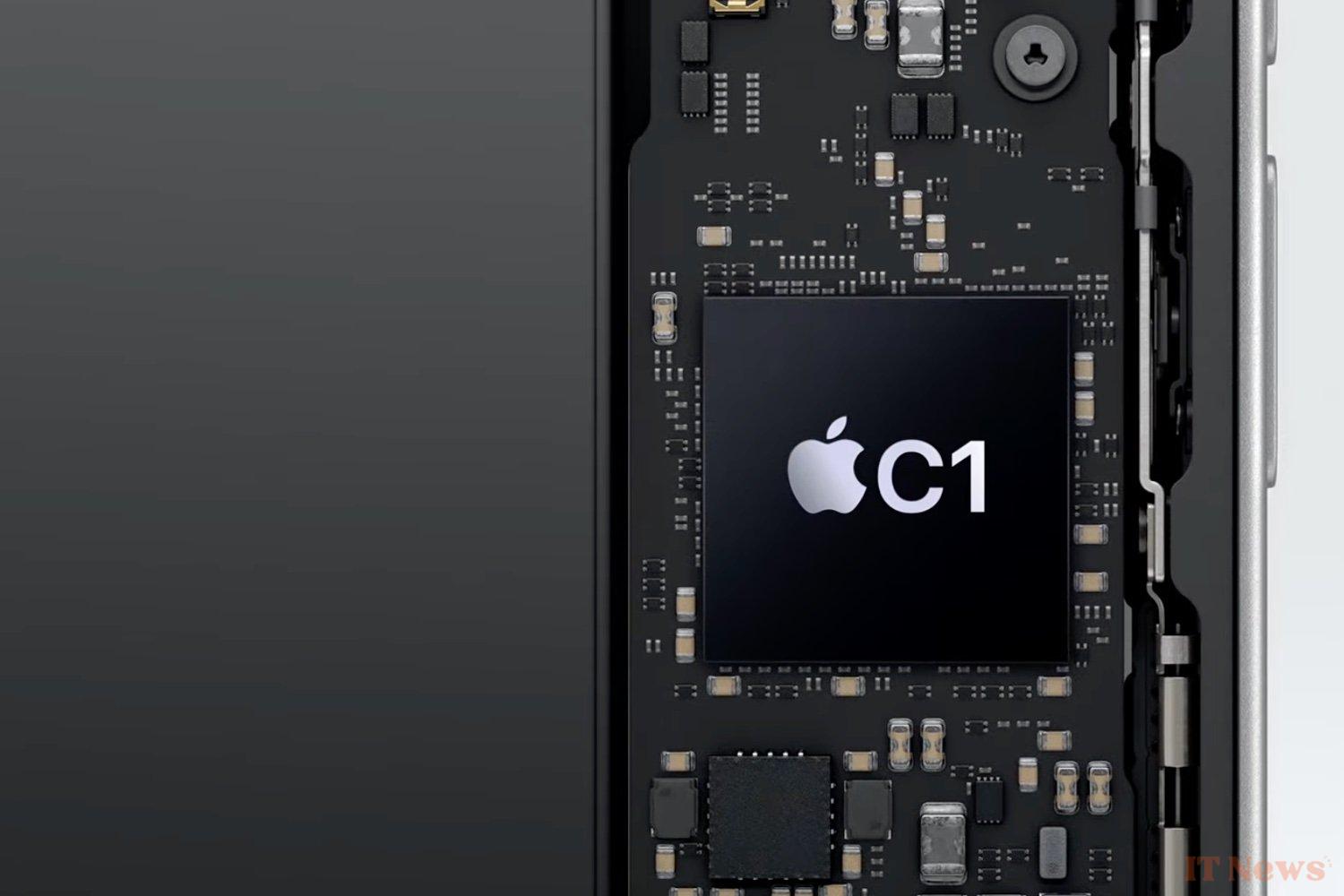It's the easiest bet to make: Apple will launch iPhone 17 this year. Obviously, it's when we get into the details that things get more interesting! In 2025, the manufacturer could shake up the usual routine with a refreshed design and the introduction of a completely new model, the iPhone 17 Air, which would accompany the iPhone 17, 17 Pro, and 17 Pro Max. From price to release date, colors, and technical specifications, we take stock with the latest rumors.
What design for the iPhone 17?
The question could be asked in the plural, as Apple reportedly intends to play the difference card in terms of design this year. This will include a bump extending across the entire width of the phone, a bit like the Pixel.
This rectangular area would mark a significant change, in every sense of the word, with the design we have known since the iPhone 11 of 2019. Exit the square block, the true distinctive signature of the smartphone family, with which Apple has played a lot in its communication.
The iPhone 17 Pro would have a bump occupying something like a quarter of the back of the devices, while that of the iPhone 17 Air would be more reduced in height - but the module would still occupy the width of the smartphone, even if a single photo sensor would be hidden inside. The only exception this year: the iPhone 17 would be content with the vertical pill introduced with the iPhone 16.
In other words: it would be quite easy to spot the iPhone you have in your hand! For users most keen on new features, it is important to explicitly display that you own the brand new model. These different designs will help, even if the "family resemblance" effect disappears.
As for the very sensitive subject of colors... surprisingly, we don't yet know what sauce Apple intends to serve its new range in! But there is no doubt that the manufacturer will once again want to make a splash by imposing a color in the zeitgeist, like the ultramarine blue or teal green of the iPhone 16.
What are the technical features of the iPhone 17?
Apple would take advantage of this redesign to also review the materials used in the chassis. The iPhone 17 would keep its aluminum, but surprise, the iPhone 17 Pro would abandon its (very light) layer of titanium, again in favor of aluminum. All high-end iPhone models have so far benefited from a premium material, whether stainless steel (introduced with the iPhone X) or, therefore, titanium (since the iPhone 15). Even more surprising, only the iPhone 17 Air would have a bit of titanium in its chassis, perhaps to strengthen it?
Another important change: the usually glass back would make more or less space for aluminum, which would house the famous bump. If glass is essential for MagSafe charging, a partially aluminum back would reduce the risk of breakage in the event of a fall.
Rumors don't expect any drastic changes to the front design, which means the Dynamic Island is here to stay. However, the screen size is rumored to be increased for the iPhone 17: it would go from the 6.1 inches of the iPhone 16 to 6.3 inches—the same size as the iPhone 16 Pro, in short.
The iPhone 17 Pro and iPhone 17 Pro Max are rumored to retain their 6.3-inch and 6.9-inch panels, respectively. The iPhone 17 Air, for its part, is rumored to introduce a new 6.6-inch diagonal. The lineup would benefit from a new anti-reflective coating, more scratch-resistant than the current Ceramic Shield (a variant of Corning's Gorilla Glass).
While all Android smartphones, including entry-level ones, offer refresh rates of 90Hz and above, mainstream iPhones have firmly remained stuck at 60Hz. Only the Pro models get a refresh rate that adapts to the content's speed from 1Hz all the way up to 120Hz. What Apple calls ProMotion.
Good news: all iPhones from the 2025 vintage would benefit from this infinitely smoother display technology. Apple has reportedly finally decided to use LTPO (low-temperature polycrystalline oxide) panels for all models. However, the always-on display that displays the time and notifications at all times could remain a privilege of the Pro models.
Which chips for the iPhone 17?
Under the hood, and without too much surprise, Apple is said to be slipping in an A19 engine for the iPhone 17 and 17 Air, and an A19 Pro for the iPhone 17 Pro and Pro Max. These systems-on-a-chip are still engraved at 3nm, possibly of the next generation (N3P, according to TSMC's nomenclature). What does that mean? Simply put, we should expect further gains in terms of energy efficiency and performance, even if it is not certain that the user will actually perceive the benefits.
The RAM envelope would swell from 8 to 12 GB on the iPhone 17 Pro and Pro Max, which is always good to take. The iPhone 17 and 17 Air would keep the 8 GB of the iPhone 16 and 16 Plus, the bare minimum for Apple Intelligence.
The iPhone 17 Pro could use an original cooling technology for an iPhone: a vapor chamber. These thin thermal cavities contain a liquid that evaporates under the effect of heat and condenses on the cooler walls, thus efficiently dissipating heat over a large surface area. This is a system that we sometimes see at work on Android "gaming" smartphones.
This process helps maintain low temperatures and prevent performance drops due to overheating (thermal throttling). Equipped in this way, the iPhone 17 Pro would be able to use their chip to full capacity and for longer, for large 3D games, for example, or very demanding apps like video editing. This rumor mainly concerns the Pro models, but a rumor also announces it for the entire range.
After a relatively successful launch in the iPhone 16, the C1 cellular chip developed by Apple would find a small place in the iPhone 17 Air. For the other three models, the modem would still be supplied by Qualcomm. Still on the connectivity front, the entire range could integrate a "home-made" Bluetooth 5.3 and Wi-Fi 7 chip, which would be a major first (this time to the detriment of Broadcom).
Eventually, Apple would like to combine cellular access, Bluetooth, and Wi-Fi on a single chip. The goal is to manage power consumption as precisely as possible.
And since we're talking about energy, the big change in the 2025 edition would concern the iPhone 17 Pro and Pro Max. These models would feature the easily detachable battery removal system by circulating a (weak) electric current through it. A technology introduced with the iPhone 16 and 16 Plus and adopted in the iPhone 16e. No change, however, in terms of wired charging speed: 35W.
Which camera for the iPhone 17?
The iPhone 17 Pro Max would be the first of its kind to feature a whopping three 48MP camera sensors! Wide-angle, ultra-wide-angle, and a "tetraprism" telephoto lens would be featured on the largest iPhone. At the other end of the spectrum, the iPhone 17 Air would only have a single 48MP sensor, which could be the same as the one on the iPhone 16e.
The excellent 5x optical zoom would remain the preserve of the Pro models, thanks to their tetraprism. It's rumored that at least one of the 2025 iPhones—likely a Pro model—will feature a variable aperture diaphragm controlled by mechanical components. The camera's aperture could expand or contract to let in more or less light. Current iPhones have a fixed aperture, meaning the amount of light entering the lens can't be directly adjusted by the user.
On the front, the selfie camera would be revised and improved: out goes the current 12MP model, users would benefit from a 24MP sensor with 6 elements. More pixels for more details, that's always something!
What is this iPhone 17 Air?
Apple is reportedly replacing the Plus model, which apparently isn't the most popular, with something completely new. This is what rumors have dubbed the iPhone 17 Air, a smartphone that is said to be boldly playing the wasp waist card even if it means sacrificing some specifications.
Rumors are still having trouble determining the thickness of this smartphone; it varies between 5.5 mm and 6.25 mm. It wouldn't be Apple's thinnest product—the 12.9-inch iPad Pro M4 is only 5.1 mm!—but for a smartphone with guts much more condensed than a tablet, it would still be a great achievement.
One of the compromises Apple would be willing to make to achieve such a thickness is to minimize the number of photo sensors on the back. In fact, it would only have one, like the iPhone 16, while the Galaxy Edge has two! All this, despite a chassis of around 5.6 mm.
The iPhone 17 Air seems first and foremost designed as a statement of intent for Apple, a way to lift a corner of the veil on the future of its smartphones. The iPhone X had played this role in its time, before all the other models adopted a similar design. The new feature could allow this very thin model to find buyers among all those who swear by novelty.
iPhone 17, 17 Air, 17 Pro and 17 Pro Max: what release date?
Unless there's a huge surprise, the release date of the upcoming iPhone 17s should be sometime in September. In recent years, the manufacturer has made every effort to release its new smartphones around September 15-20, which easily boosts revenue for the summer quarter (which ends at the end of September).
Apple usually arranges to launch all four models at the same time. The only recent exception was in 2022, when the iPhone 14 Plus was pushed back to October—likely due to minor production issues. Could it be that the Apple company has decided to give the iPhone 17 Air a bit of breathing space this year, by separating its launch from the rest of the range?
There's no indication that this is the case, but Apple is obviously not immune to a last-minute problem that would force it to delay the release of this new model by a few weeks. However, we feel that the manufacturer will do everything to offer all four models at the same time, so they will all benefit from the same powerful marketing wave.
Launching the iPhone 17 Air later also means running the risk of losing customers in a hurry who will prefer to settle for an iPhone 17 or an iPhone 17 Pro.
What price for the iPhone 17?
This is the question everyone is asking, and it's possible that even at Apple, they don't know the answer yet. The current geopolitical situation is impossible to read today, so imagine in a few months! Donald Trump's chin-twisting policy changes completely every day, with customs tariffs of varying scope depending on the industry targeted. Not to mention the favors that can be obtained by the big American bosses who, like Tim Cook, have opportunely embraced the new doctrine.
Nevertheless, an indiscretion has assured that the price of the iPhone 17 Air would be in the same waters as that of the iPhone 16 Plus, starting at €969 currently. The rumors do not yet provide information on the other models.






0 Comments